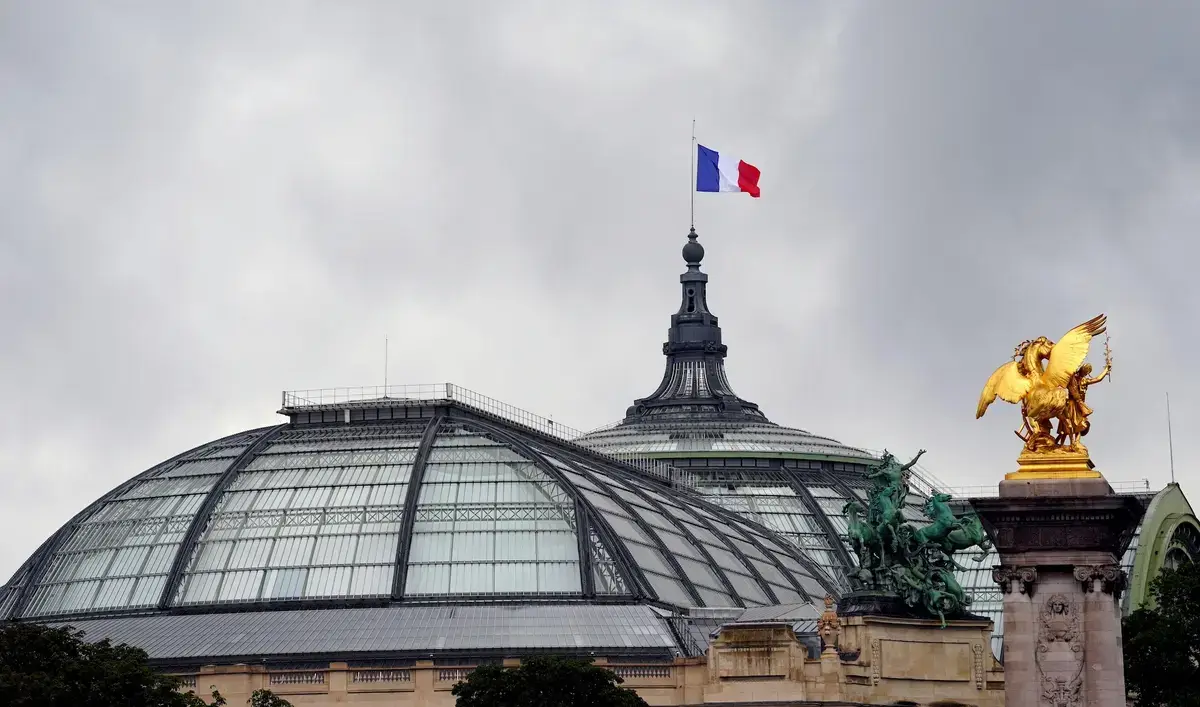The iconic Grand Palais – home to some of the most prestigious cultural events in Paris – became the unlikely center of attention for all the wrong reasons during Art Basel this year. As throngs of art enthusiasts, collectors, and gallerists gathered for one of the world’s premier art fairs, they were greeted by an unexpected force: nature. Heavy rain battered the glass-domed ceiling of the Grand Palais, resulting in leaks that caused concern and chaos for several galleries exhibiting at Art Basel Paris.
The Grand Palais, a historical and architectural marvel built at the turn of the 20th century, has always stood as a symbol of Parisian elegance and grandeur. Its iconic glass roof, however, became a vulnerability during the torrential downpour. As rainwater found its way inside, several prominent exhibitors—including Lisson Gallery, White Cube, and a number of emerging and established artists—were left scrambling to protect the invaluable works on display.
Art Basel’s Quick Response
The organizers of Art Basel moved swiftly, deploying additional art handlers to assist affected galleries in preserving their artwork. Protective coverings were provided, and several galleries re-arranged their booth layouts to shield pieces from the leaks. Lisson Gallery, one of the leading exhibitors affected by the situation, reported that their team had to swiftly move and cover some of their featured pieces as water began to drip onto the floor and stands. Despite the swift action, some installations needed to be re-hung, and a sense of unease permeated the fair as both exhibitors and collectors worried about potential damage.
A spokesperson from Art Basel emphasized that visitor safety and the protection of the artworks remained the highest priorities. Teams of technicians were dispatched to the site almost immediately to assess and address the situation. However, the iconic glass structure, celebrated for its beauty, posed challenges for instant fixes, especially amidst ongoing rain showers.
Galleries on Edge
For many galleries, the leaking roof was more than just a logistical challenge—it also dampened the overall atmosphere of the event. Conversations shifted from the typical excitement around newly unveiled works to concern over the weather and its impact on this otherwise well-oiled machine of an art fair. Several exhibitors voiced their frustrations. “We come here expecting the utmost care for our pieces,” one gallery owner remarked. “This kind of disruption affects the trust between the galleries, artists, and the fair organizers.”
Yet, in true Art Basel spirit, resilience emerged. Many gallerists took the disruptions in stride, employing creative solutions to keep spirits high. One booth even playfully incorporated the sudden presence of buckets used to catch the dripping water into an impromptu installation, adding a sense of levity to the otherwise tense situation.
The Wider Impact on the Paris Art Scene
The incident at the Grand Palais also highlighted wider issues concerning the aging infrastructure of some of Paris’ most beloved historical buildings. The glass-domed Grand Palais, though stunning, is also over a century old and in need of constant maintenance. With climate change contributing to more unpredictable and extreme weather events, concerns have grown about how well-equipped these heritage venues are to host high-profile international events without incident.
Art Basel Paris, in its relatively new form, has been heralded as the jewel in the crown of the city’s thriving art scene. The event draws in collectors from around the globe, and it represents a powerful convergence of culture, commerce, and creativity. But incidents like the rainwater leakage threaten to undermine the city’s credibility as an art-world powerhouse.
City officials, aware of the stakes, have assured the public and the international community that steps are being taken to modernize and reinforce historical structures, such as the Grand Palais, while preserving their charm and historical value. The Palais has been undergoing renovations in stages over the last several years, but critics argue that more needs to be done—and urgently—to ensure these cherished venues can withstand modern-day pressures.
Resilience and Art’s Power to Adapt
Despite the unexpected waterworks, Art Basel Paris proceeded, a testament to the resilience of the art community and the unwavering passion that defines it. Crowds still flocked to see the curated presentations from both blue-chip and emerging artists, and the discussions—though initially overshadowed by the leaks—soon returned to the art itself.
The incident serves as a reminder of the delicate dance between art and its environment. While galleries, collectors, and artists demand perfection in showcasing their works, the unpredictability of the natural world remains a factor that even the best-organized events cannot fully control. Yet, for many, these challenges also represent the spirit of art—its adaptability, its vulnerability, and its power to transform adversity into something meaningful.
As Art Basel Paris moves forward, the hope is that lessons from this year’s event will prompt better preparation and perhaps even inspire new conversations about the relationship between art, heritage, and the physical spaces that contain them. In the end, the water leaks may have briefly disrupted the fair, but they also added an element of unpredictability, reminding us that, at its core, art is about responding to the world around us—in all its imperfections.


























